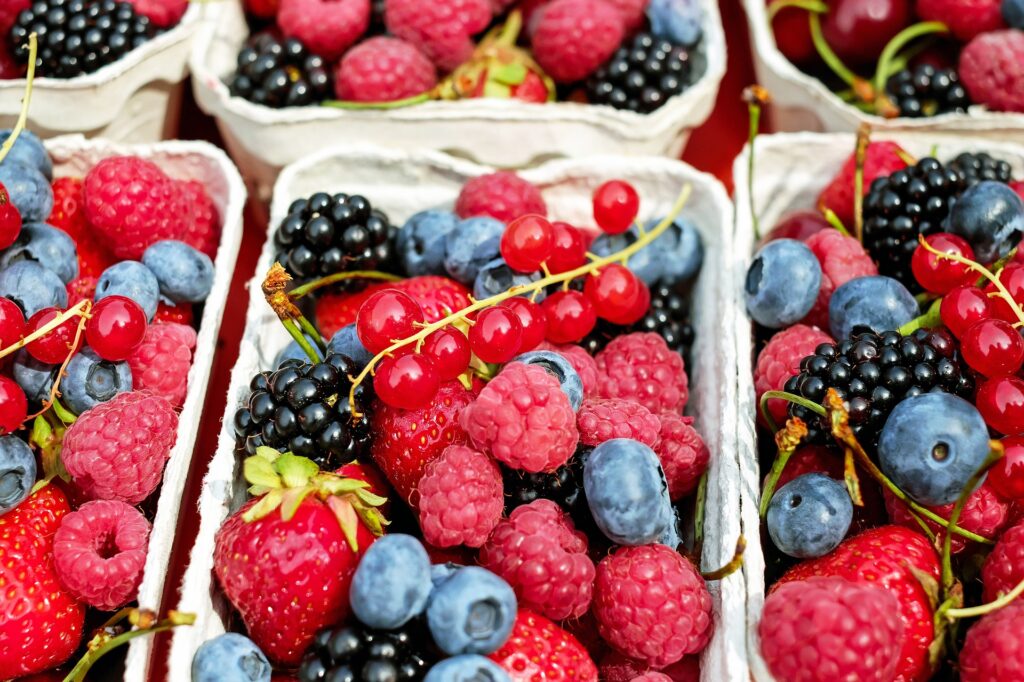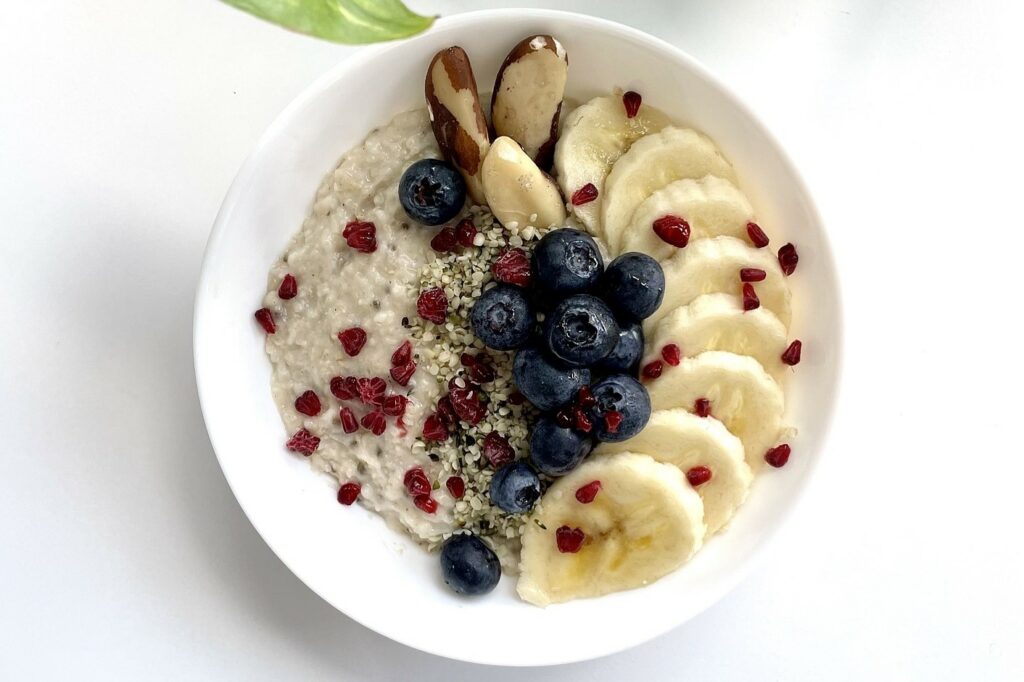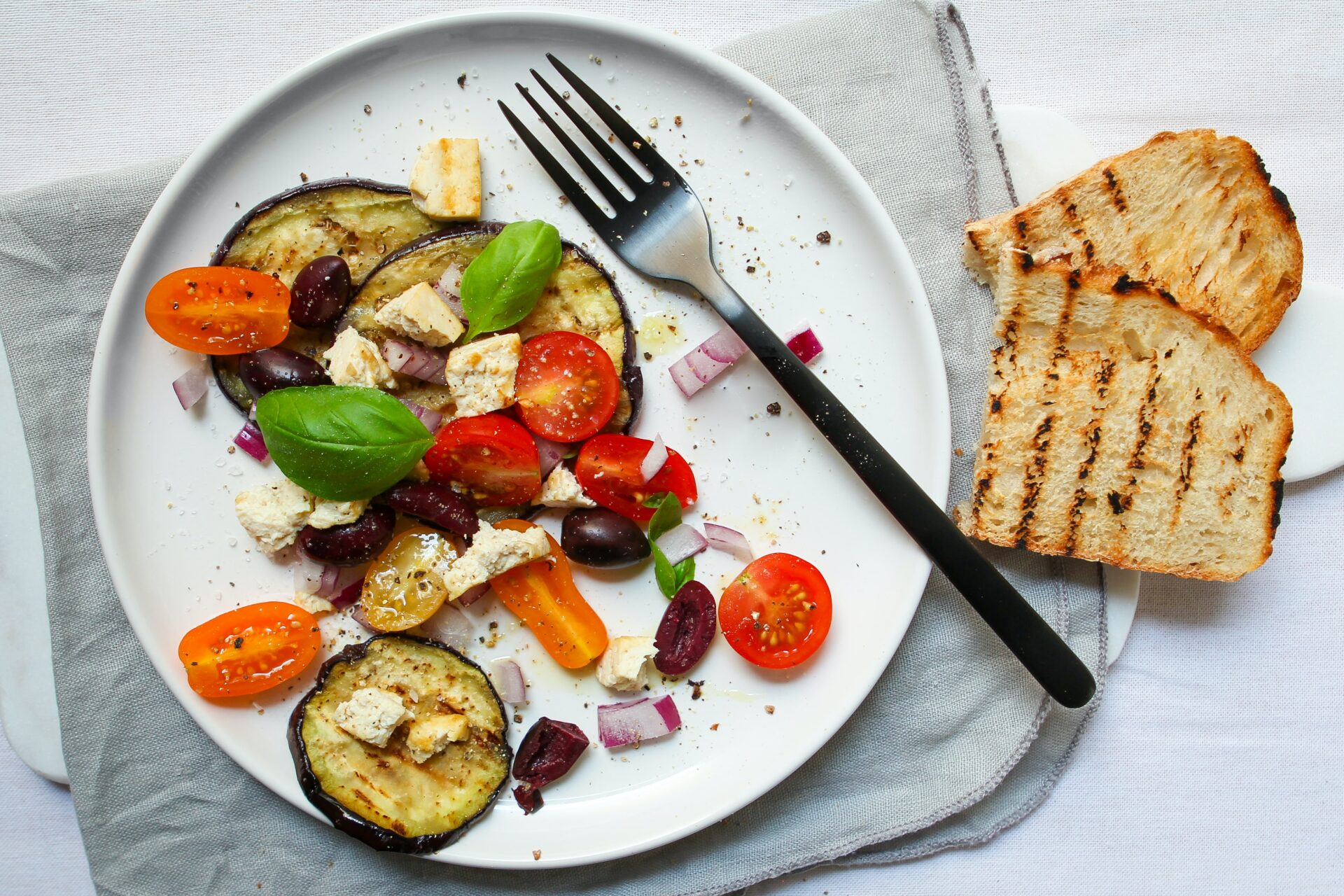Weight loss in cycling is such an important topic that I don’t know where to start.
Because for the majority of cyclists losing weight is one of the most effective ways to improve performance – especially when climbing. This is because through weight loss you can improve your power-to-weight ratio.
However, even esthetical motivations are legitimate reasons to lose a few kilograms of body weight.
And we’ve all been there amid the most popular diet. It made you starve yourself throughout the day and never lose the feeling of hunger, only to realize that the weight you lost was just water. And as sluggish as you feel you return to your old diet to gain the weight back.
The only thing that you learn from it is that getting lean is only for the select few that have nerves of steel and can sustain the constant hunger with their sheer willpower. And that counting calories is a premise.
Frustrated you give up and return to Netflix binge-watching and overindulging in Ben and Jerry’s.
But that’s bullshit.
So, in this article, I’ll show you what the science has to say about an optimal diet for weight loss and cycling performance. We’ll look at what a proper cycling diet plan should look like and which strategies work to make you lose weight long-term.
At the end of the piece, I’ll leave you an example day of what a sustainable weight loss diet can look like in the real world.
But first, let’s examine how losing weight affects cycling performance.
Weight Loss for Improved Cycling Performance
Losing weight for cycling, in general, improves your power-to-weight ratio.
If you’re not familiar with the term, it’s a measure of how fast a climber you are and it’s expressed in watts per kg (w/kg).
For that reason, let’s look at an example of how losing weight makes you cycle faster: Rader A is 75 kg, and pulling up a climb for a 20-minute best at 320 watts, which equals 4.26 w/kg as 320w/75kg = 4.26w/kg. Rider B is 70 kg and only needs 298 watts to keep the wheel of Rider B up the climb. Because 70kgx4.26w/kg = 298 watts.
If you train with power you know that gaining 22 watts to your best 20 minutes takes months of dedicated training.
Of course, losing 5kg as a cyclist isn’t easy either.
But most of the time weight loss will increase your power-to-weight ratio and therefore your performance, though you may lose some power.
And most recreational cyclists know that losing weight makes you go faster uphill. Though, this is easier said than done.
To solve the trouble of how to lose weight as a cyclist, let’s look at proven tips you want to incorporate.
1. Manipulate Energy Density of Food to Lose Weight
Reducing the energy density of a diet may play an important role in a lasting weight loss strategy.
Energy density is the amount of energy or calories in a particular weight of food and is usually displayed as kcal/gram. For example, oil is very low in volume but very high in energy density. On the other hand, fruits and vegetables are very high in volume due to water and fiber content, and therefore very low in energy density.
The problem is that our eyes are not a reliable way to assess the amount of energy consumed. Several studies have shown that subjects eat the same amount of food in terms of weight, no matter the macronutrient composition. As a result, in a high-fat diet, likely more calories are consumed which results in greater weight gain, due to the high energy density of fatty foods.
Consequently, studies found that if you eat a diet low in energy density, fewer calories were consumed though the amount of food in terms of weight was higher.
This finding doesn’t change if we look at long-term weight management as a review did. Women were observed for 6 years and those with a diet low in energy density maintained weight best, while those with a high energy density diet even gained weight and had a higher BMI. However, people who consume more servings of fruits and vegetables have the lowest energy density in their diet.
This is no surprise as fruits and vegetables have the lowest energy density of all foods.
But how do we manipulate energy density for successful weight loss? Make the bulk of your plate of vegetables and snack fruit throughout the day to maintain satiety.
So, on the one hand, you want to increase the number of foods low in energy density. On the other hand, you want to decrease the number of foods high in energy density.
However, there’s more to proper weight loss than that.

2. Define a Clear Weight Loss Goal
If you want to lose weight as a cyclist or any other endurance athlete you need a clear goal to do so.
It’s not enough to simply say “I want to lose weight.” How much weight do you want to lose? Do you want to lose 1 kg, 5 kg, or 10 kg of body weight? That’s important because for sustainable weight loss, you need a specific weight loss goal. After all, it takes a specific amount of time.
To be able to perform high-quality workouts and prevent muscle loss, losing 0.5 kg per week should be desired. That way, you would need two weeks to lose 1 kg of weight. You would need 10 weeks or 2,5 months to lose 5 kg and you would need 20 weeks or 5 months to lose 10 kg of body weight.
It may seem like a long time, but if you look at a whole year a weight loss of 10 kg doesn’t even require half a year. However, that way you’re able to maintain your training load and muscle mass and thereby maximize cycling performance.
Now, what are proper strategies to reduce energy intake successfully? Let’s talk about that now.
3. Reduce Energy Intake
Reducing energy intake successfully only requires subtle changes to your diet. That can be adding lots of vegetables to your pizza and reducing the amount of cheese. Or adding lots of fruits or low-fat dairy products to deserts.
That way, you won’t sacrifice the taste or palatability of your meals and you will develop healthier eating patterns aligned with official diet guidelines.
Another example comes from a study where subjects consumed a salad low in energy density before their main meal. On average subjects ate 7-12% less during their main meal with the low-energy-dense salad before, though they could eat as much as desired.
Here are the most important things to look at to reduce energy intake:
- Incorporate large amounts of fruits and vegetables into your meals. Whole plant foods are the lowest in energy density and add the most to your health.
- Don’t change eating behaviors completely. Make subtle changes to your diet like adding a bunch of vegetables to your pasta or eating a big mixed salad low in energy density before your main meal.
- Use broth-based soups as a starter as well. They add flavor and are filling without adding calories.
- Round out meals by adding lots of fruits and vegetables, whole grains, legumes, low-fat dairy products, and lean meats.
- Drink plenty of water and other low-energy-density beverages like tea or black coffee to quench your thirst.
Reducing energy intake by manipulating the energy density of your diet should be your preferred way to achieve weight loss because if you sacrifice carbs you may end up in disaster.
4. Design Your Diet Plan Around Your Workouts
Forget about macronutrients. Forget about counting calories. All these things are ineffective for long-term weight loss. It’s not about food restrictions.
To date, not a single study has demonstrated the performance benefits of the ketogenic or a low-carb diet.
You don’t want to sacrifice too much and live a restricting diet. If you suffer throughout the day by starvation you won’t make it far. With a low-energy-density diet, you can have your piece of chocolate, some ice cream, or your piece of cake. And that’s very important as well. Everyone enjoys a good treat from time to time.
A low-carb diet may get you excited at first because you lose weight fast by depleting your glycogen stores. Because every gram of carbs is stored with 2.7 grams of water in your muscles. Weight loss is a logical consequence and you can lose up to 2 kg of body weight (4 pounds) within two days.
However, carb restriction should be avoided for us cyclists in any case. Without carbs, you will feel sluggish and your exercise performance will suffer. More so, your training adaptation will be limited.
Because the evidence that carbs improve performance is overwhelming. A meta-analysis that looked at 88 randomized cross-over studies on carb consumption on endurance performance concluded that carbohydrates have a large benefit in endurance performance.
To perform your best in cycling you need large amounts of energy even though you’re on a diet. Don’t forget about that.
You still want to eat quality carbs like oats, bread, rice, pasta, or potatoes. And by eating lots of fruits and vegetables you can do so without worrying about weight.

Don’t fall into the trap of riding your bike on water. On long rides, you want to consume 30 grams of carbs per hour, and on high-intensity days 60 grams of carbs per hour. Thereby, you stay fuelled, you’re able to execute the sessions as high-quality as possible, and you maximize performance through better training adaptation.
Enough said, let’s look at what a typical day of a cycling diet plan for weight loss and performance, can look like.
Cycling Diet Plan Example
Breakfast: Whole-grain bread with almond butter, and banana. Yogurt with fresh or frozen berries, and chia seeds. Eat more slices of bread or additional bananas for long rides or high-intensity days to get more carbs in.
Lunch: 2-3 eggs omelet. Rosemary, olive oil oven potatoes, and broccoli. Mixed salad with leafy greens, tomatoes, carrots, peppers, and seasoning as desired. Eat the salad as a starter.
Workout fuel: 30-60 grams of carbs, bike fuelling is individual, find what works for you.
Dinner: Rice bowl Asian style with broccoli, mushrooms, peppers, carrots, sesame oil, and lean chicken
Snack: Eat fruit throughout the day as a snack. I like to eat apples, plums, grapes, and pears. As a treat go for a chocolate bar, some ice cream, or a piece of cake.
The more whole plant foods we eat the easier it is to lose weight.
However, we should never forget about what is most important for sustainable weight loss and that is eating to our preferences. You need to eat the food that tastes best otherwise you’ll still feel hungry. For example, if you prefer fruits and vegetables over low-fat Greek yogurt then stick with fruits and veggies.
And when losing body weight there’s always the risk of losing some muscle mass. However, this can be partly prevented with high amounts of carbohydrates and by increasing protein intake a little combined with strength training.
So, weight loss for cycling doesn’t need to be complicated. Base your diet on fruits and vegetables. Eat adequate amounts of carbohydrates to maximize cycling performance. Eat quality protein and do some strength training to prevent muscle loss.
That way you’re primed for proper weight loss and fat loss as a cyclist.
Eat as an Athlete and Train Like One
If you enjoyed this and you want to become a faster cyclist, check out my structured training plans. Since I bridge the gap between the scientific community and the greater community of cyclists I provide you with full-on training plans that target the fundamentals of endurance performance. Enjoy!
Ready to Step Up Your Training
If you enjoyed this and want to improve your cycling performance, then get your hands on one of my plans, available on TrainingPeaks, and ride faster for longer, or click below to get my specific base, build, and peak plans for amateur and elite cyclists:
- RV The Block Periodization Plan, 4 Weeks (6-8 Hours)
- RV Improve Your FTP, 8 Weeks on 6 Hours, 10 Hours, or 15 Hours
- RV Gravel Advanced Base Plan 8-12 Hours (12 Weeks) – All Gravel Races
- RV Unbound 200 Three Phases Build Plan, Advanced 8-12 Hours (12 Weeks)
- RV Unbound 200 Three Phases Peak Plan Advanced 10 Hours (8 Weeks)
Follow me on Instagram for more Cycling Content.
- Get my favorite Power Meter *here.
- Get my favorite Shoes *here.
- Get the Vittoria Corsa Tyres I use *here.
Footnotes
- Nutrition for power sports: middle-distance running, track cycling, rowing, canoeing/kayaking, and swimming
- Effects of diets and their role in weight control
- Comparison of weight-loss diets with different compositions of fat, protein, and carbohydrates
- Calorie for calorie, dietary fat restriction results in more body fat loss than carbohydrate restriction in people with obesity
- Efficacy of ketogenic diet on body composition during resistance training in trained men: a randomized controlled trial
- Carbohydrate Dependence During Prolonged, Intense Endurance Exercise
- Periodized Nutrition for Athletes
- Effects of acute carbohydrate supplementation on endurance performance: a meta-analysis
- Energy Density of Foods Affects Energy Intake in Normal-weight Women
- Dietary energy density predicts women’s weight change over 6 y1, 2, 3
- Dietary Energy Density and Body Weight in Adults and Children: A Systematic Review
- The BROAD study: A randomised controlled trial using a whole food plant-based diet in the community for obesity, ischaemic heart disease or diabetes
- The effects of a low-fat, plant-based dietary intervention on body weight, metabolism, and insulin sensitivity
- Diet and body mass index in 38 000 EPIC-Oxford meat-eaters, fish-eaters, vegetarians and vegans
- Salad and satiety: Energy density and portion size of a first-course salad affect energy intake at lunch
- Pronounced energy restriction with elevated protein intake results in no change in proteolysis and reductions in skeletal muscle protein synthesis that are mitigated by resistance exercise
Ad Hint for Asterisk Links
*Asterisks are affiliate links from services and gear I use and love. If you take action (i.e. make a purchase) I’ll earn some coffee money which I promise to drink while you enjoy the content and offers. You don’t pay a higher price.
